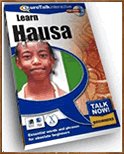Ofe Ora (as the people of Igbo call it) is one of the most delicious soups that is popularly made and eaten by the people of Igbo (a very popular Nigerian tribe), made with the leaves of a tree called oha leaves. Ora soup is often prepared with cocoa-yam, egusi or ofor/achi as the thickener.
I remember those days in the village, we pluck the fresh uha leaves directly from the tree, this is the exact reason why I prefer foods from the village, almost every ingredient used were freshly harvested from the farm, a luxury we can’t afford here in our current state of residence or other countries of the world.However, every ingredient used in making Nigerian foods can be bought in almost any Nigerian local or international market, you may not be lucky enough to purchase the very fresh ones but you will most likely find a processed or dried alternative.
The following ingredients are used in making oha soup in Nigeria, you can increase or decrease depending on the number of people you are looking to feed, this would serve 5×3 persons
This soup could be refrigerated for up to two weeks (two weeks is the recommended duration for most Nigerian soups)
The Ingredients For Oha Soup
Oha leaves (as required)
Cocao yam (see the video below)(about 15 to 20 medium sizes)
Meat of choice (chicken, assorted, beef, goat meat, turkey)
Dry fish/mangala (as desired)
Maggi (seasoning) 2 to 4 cubes
Crayfish ( 2 cups)
A handful of Uziza leaves (optional)
1 big Stock fish head
Palm oil 15 to 20cl
0.2 cup of ofor or achi (as alternative thickener)
Ogiri (local ingredients)
salt and pepper to taste
Whenever I am making soups with cocoa yam, I chose to buy a small quantity of ofor or achi to supplement insufficiency (just in case) maybe about 1 or 2 tablespoons
How To Prepare Oha (ora) Nigerian Soup
Time: About seventy minutes
Wash the cocoa yam with just water and start cooking, cook until it is soft (you can check with your fingers), then peel off the outer back and pound with a mortar and pestle, the normal traditional way. Grind crayfish and fresh pepper (I like to use fresh pepper for most Nigerian foods)
Pluck off the Uha leaves from the stem and slice with a kitchen knife, I like to shred the leaves with my fingers the exact way I learned from my mother (You will find how this is done from the video below, this method will ensure that the leaves are not shredded to tiny bits).
In case you want to slice with a kitchen knife just to ease up the process be sure not to slice into very tiny bits. See the uha soup image above
Parboil meat with the necessary ingredients, allow to cook for ten to fifteen minutes before adding the hot-water-washed dry fish and, (we use hot water to soak and wash dry fish/stock fish just to make sure the accompanying sand is washed off). Add the stock fish and cook until it is tender,
Add more water then add red oil (palm oil), ground crayfish, maggi, salt and pepper to taste. Stir and allow boiling. At this point it should give a good soupy taste (even though it would be watery)
Then add the pounded cocoa yam as you can find in the video below (at this point you can add the ground egusi if you choose to make oha soup with egusi, which is also a very tasty recipe. Remember I told you that either egusi, achi or cocoa yam can serve as the thickener for this popular Igbo soup).
Also add the ogiri at this point.
Stir; allow to dissolve before adding the sliced uziza leaves then uha leave should follow after a minute. Stir and cook for another 3 to 5 minutes and you just made a very delicious oha soup (ofe ora).





















